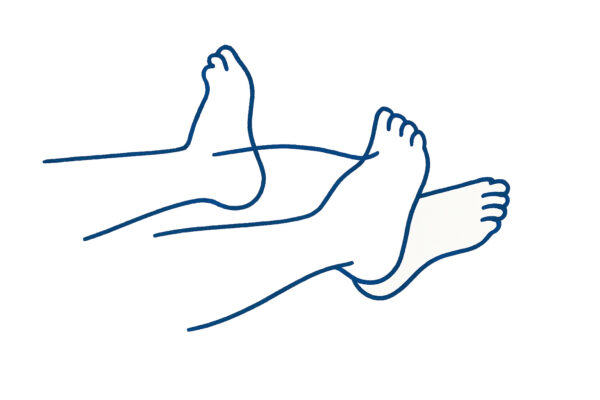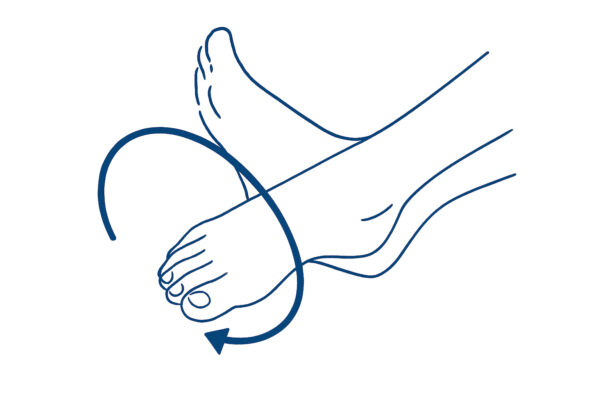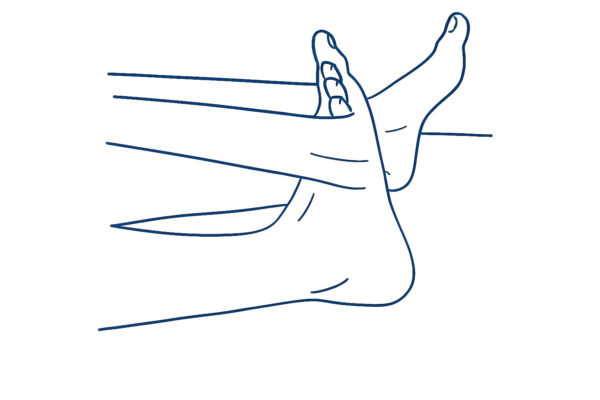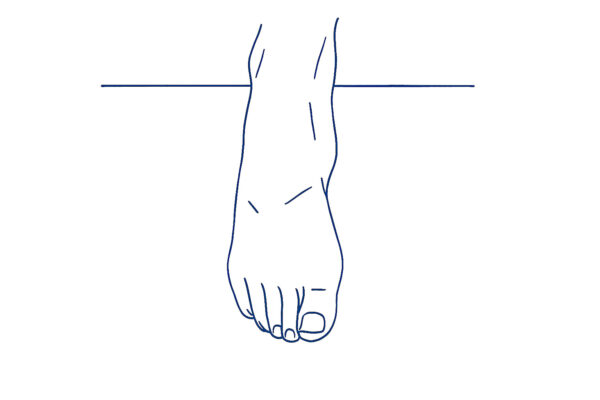 A fracture is the same as a break. In most cases, a simple fracture will be treated with a plaster cast.
A fracture is the same as a break. In most cases, a simple fracture will be treated with a plaster cast.
More complicated fractures may require surgical fixation using pins and plates.
What should I expect when my plaster is taken off?
- Skin Changes – dry skin, colour changes, and increased hair growth.
- Stiffness – because your ankle has been held in one position by the plaster for a period of time.
- Swelling – your foot and ankle will be swollen, this may increase at the end of the day or if you have been upright too long.
- Discomfort – you may feel more pain as you begin to move and walk on your ankle. This is normal and will ease.
These symptoms can restrict your walking initially. You may need to continue using a stick or crutches. You will be advised on this.
What should I do to help these symptoms?
- Elevation – keep your leg elevated when you are not walking. Support your leg with pillows or cushions; make sure your foot is above the level of your hip. Doing your exercises in this position reduces swelling.
- Compression – You may have been given tubigrip to use on your ankle/foot during the day. Make sure there are no wrinkles. Take it off at night.
- Dry Skin/Excessive Hair Growth – wash the foot/ankle with warm water. Use a bland moisturiser (aqueous cream) for the first few days. Excessive hair growth is normal after coming out of plaster and will resolve in time.
- Painkillers – painkillers can be helpful. Always check instructions or ask your pharmacist or GP. Warm water soaks before exercise can help relieve pain and stiffness.
- Ice – ice limits the swelling and can ease pain. Apply to ankle 4-5 times a day for 10-20 minutes. Cover a pack of frozen peas or ice with a damp towel. Do not apply ice directly to the skin, it can cause damage. If your sensation is impaired do not use ice.
- Exercise – it is important to gently exercise your ankle joint as soon as the plaster is removed.
- Try to avoid limping by using a walking aid. If using a stick, hold it in the opposite hand to the affected leg. Wear supportive footwear. Begin by walking short distances and increase as pain allows.
What exercises are useful?
It is important to regain the movement and strength in your ankle as soon as possible. These exercises are designed to reduce swelling and stiffness in the ankle. They can be started as soon as possible, but do not push into pain. Repeat the exercises 4 times a day at least.
 Exercise 1
Exercise 1
Lying on your back or in sitting, bend and straighten your ankles. Repeat 10 times each.
 Exercise 2
Exercise 2
Lying on your back or in sitting, rotate your ankle, change direction. Repeat 10 times.
 Exercise 3
Exercise 3
Sit with your legs supported and your knee straight. Put a towel around the ball of your foot; gently pull your foot towards you feeling a stretch in your calf/ankle. Hold for 20-30 seconds and repeat 5 times.
 Exercise 4
Exercise 4
In sitting or lying, turn the sole of the foot inwards and outwards, moving from the ankle. Keep your hip and knee still. Repeat 10 times.
Will my ankle get back to normal?
Your movement and strength will improve over several months and will continue to improve for up to a year. It is important to continue with your exercises and not give up! You should not drive until you have recovered good ankle movement. You can return to work when you feel able to carry out your duties. This may be immediately if you have a non-manual job or longer if you do heavy, manual work.
If you feel you need further help and have not already been referred to a physiotherapist, contact your GP.
Contacts
Fracture Clinic: 01324 566461

